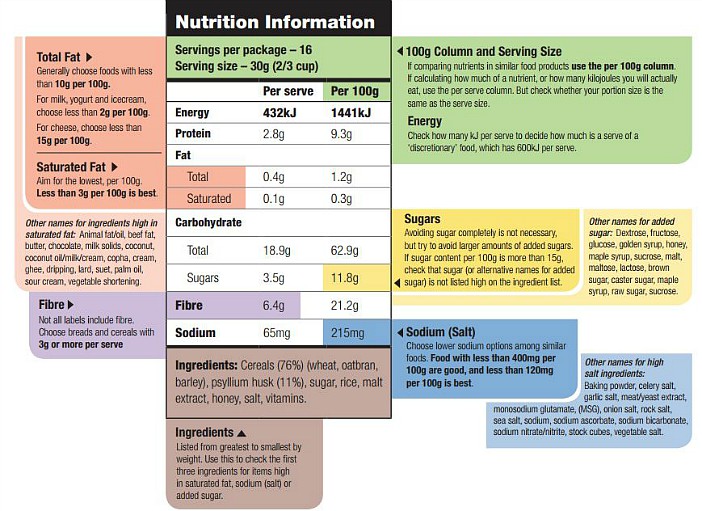
In this presentation UNE academic Dr Gal Winters Ziv cautions us to read the food labels.
Do you make a habit of reading what is written on the packaging. Before you buy read the food label. Compare products and see what is in the food you are going to eat.
Are there food labels on carrots? On lettuce? On fresh meat? On the items that you buy in the delicatessen? On what food items do you expect to see an Australian Food Safety Standard label?
Understanding Food Labels
.
The National Diabetes Services Scheme of the Australian Government also provides a helpful downloadable PDF on how to understand food labels.
Food labels
Food labels are required on all packaged or processed food. Even the chooks that are cooked in store must declare what is used in the cooking process. In the next few topics we will take a closer look at the different parts of the food labels.
Labels must:
-
- be written in English
- be clearly presented
- show the ‘use by’ or ‘best before’ date
- include an ingredients list
- include a nutrition information panel
- clearly identify food allergens and additives.
Most food labels have three parts where you will find this information:
-
- Serving size
- Nutritional content
- Ingredients
In this diagram the recommended serving size is highlighted in green, the nutritional content is in white, and the product ingredients are in brown.
This information may not appear in the same place on every product. You may have to search for each section in different places on the packaging of bottles, cans and boxes

